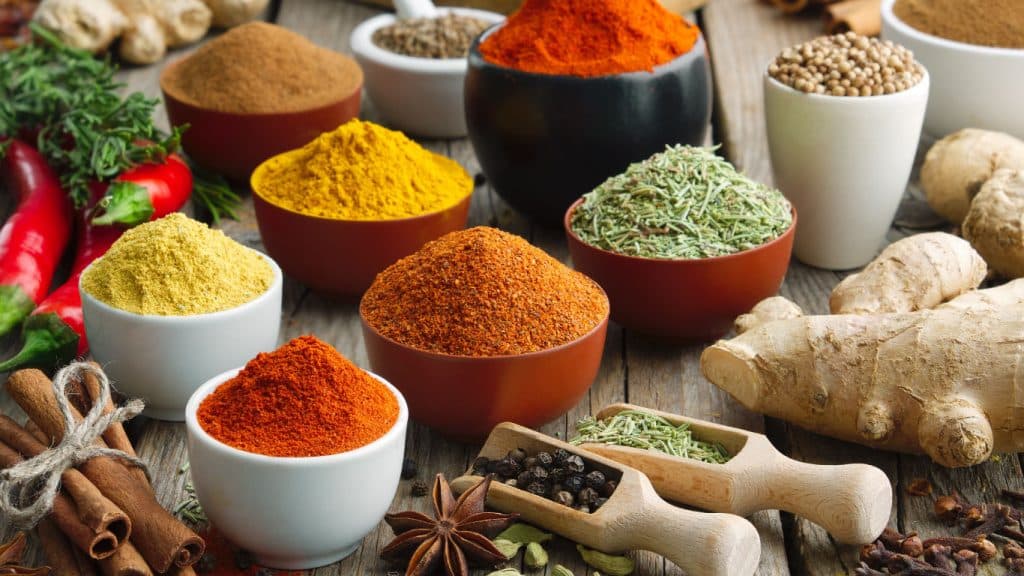Squash: A Nutritious and Delicious Fall Favorite
Squash is a tasty and colorful vegetable that many people enjoy, especially in the fall. It’s packed with nutrients, easy to cook, and comes in many different varieties. Squash has been grown and eaten for thousands of years, and it’s one of the healthiest foods you can include in your diet. Let’s take a closer look at the history of squash, its health benefits, and some fun and easy ways to cook it!
What is Squash?
Squash is a type of plant that grows on vines and produces large, fleshy fruits. Even though we often think of squash as a vegetable, it’s technically a fruit because it has seeds inside! Squash comes in two main types: summer squash and winter squash. Summer squash, like zucchini, has thin skin and is eaten when it’s still soft. Winter or fall squash, like butternut and acorn squash, has thick skin and is harvested in the fall when it’s fully grown. These types of squash can be stored for a long time, making them perfect for the cooler months.
The History of Squash
Squash has a long and rich history. It was first grown by Native Americans over 10,000 years ago and became an important food for many tribes. The word “squash” comes from the Native American word “askutasquash,” which means “eaten raw or uncooked.” However, most squash is cooked before eating today. Squash was a key part of the Native American diet, along with corn and beans, in what was called the “Three Sisters” of agriculture. These crops helped keep people healthy and strong.
As European settlers came to the Americas, they learned to grow and eat squash too. Today, squash is still a popular food around the world, especially during the fall and winter seasons.
The Many Varieties of Squash
There are many different types of squash, each with its own unique taste, texture, and use in cooking. Let’s take a look at some of the most popular fall squashes and what makes them special.
Butternut Squash
Butternut squash is one of the most well-known types of fall squash. It has a sweet, nutty flavor, and its smooth, orange flesh makes it perfect for soups, roasting, and mashing. Butternut squash is rich in vitamin A and fiber, making it a nutritious and filling choice for meals.
Acorn Squash
Acorn squash is small, round, and usually dark green with ridges. Its flesh is slightly sweet and creamy when cooked. This squash is often baked or roasted and can even be stuffed with grains or vegetables for a hearty meal. Acorn squash is packed with vitamins A and C, helping to keep your immune system strong.
Spaghetti Squash
Spaghetti squash is a fun and unique variety because when cooked, its flesh turns into stringy strands that look like spaghetti! This makes it a great low-carb alternative to pasta. You can enjoy spaghetti squash with your favorite sauces or in salads. It’s a good source of fiber and vitamin C, making it a healthy and tasty option.
Why Squash is Good for Your Health
Squash isn’t just delicious; it’s also full of important nutrients that help keep your body healthy. Most types of squash, especially fall varieties like butternut, acorn, and spaghetti squash, are packed with vitamins, minerals, and fiber. These nutrients help support your eyes, skin, immune system, and digestive health. Squash is also low in calories, making it a great food to enjoy if you’re looking to eat healthier without feeling hungry.
Squash and Vitamin A
One of the biggest health benefits of squash is its high amount of vitamin A. This vitamin is super important for your eyes and skin. Eating foods like butternut and acorn squash that are rich in vitamin A helps protect your vision and keeps your skin looking healthy. Vitamin A also plays a role in boosting your immune system, which helps your body fight off sickness and stay strong.
Fiber-Rich Squash for Digestion
Squash is also a great source of fiber, which is important for digestion. Fiber helps keep your digestive system moving, making it easier for your body to break down and absorb the nutrients from the foods you eat. A diet rich in fiber can help prevent constipation and other stomach problems. Plus, fiber makes you feel full, which can help you manage your weight by keeping you satisfied for longer.
Antioxidants in Squash
Squash is full of antioxidants, which are compounds that help protect your body from damage caused by harmful molecules called free radicals. These antioxidants, found in the colorful flesh of squash, help reduce inflammation in the body, which can lower your risk of diseases like heart disease and certain cancers. Eating squash regularly can help keep your body healthy and strong.
Squash as Medicine: Healing Foods
Squash has long been known as a healing food, especially when it comes to reducing inflammation and supporting heart health. The combination of vitamins, fiber, and antioxidants in squash makes it a powerful tool for helping your body fight off illness and stay in balance. Some studies even suggest that eating squash regularly can help with blood sugar control, making it a great option for people looking to manage their weight or prevent diabetes.
How to Pick and Store Squash
Choosing the right squash at the store can make a big difference in how it tastes and how long it lasts. When picking squash, look for one that feels heavy for its size and has a firm, unblemished skin. The skin of fall squashes like butternut, acorn, or spaghetti should be hard and free of soft spots, which can mean the squash is overripe or going bad.
Once you bring your squash home, it’s important to store it correctly. Fall and winter squashes can last for weeks or even months if kept in a cool, dry place. You can leave them in your pantry or on the counter, but avoid storing them in the fridge because the cold can cause the squash to spoil more quickly. Once cut, squash should be wrapped and kept in the fridge, where it will last for a few days.
Delicious and Healthy Squash Recipes
Squash is super versatile and can be used in so many delicious ways! Whether roasted, mashed, or added to soups, there’s a recipe for everyone to enjoy. Here are a few easy and tasty ways to cook with squash.
Roasted Butternut Squash with Cinnamon
This simple recipe is perfect for fall. Roasting brings out the natural sweetness of butternut squash, and the hint of cinnamon adds a warm, cozy flavor.
INGREDIENTS
- 1 butternut squash, peeled and cubed
- 1 Tbsp olive oil
- 1 teaspoon cinnamon
- Salt and pepper to taste
DIRECTIONS
- Preheat the oven to 400°F (200°C).
- Toss the squash cubes with olive oil, cinnamon, salt, and pepper.
- Spread the squash evenly on a baking sheet and roast for 25-30 minutes, or until tender and golden brown.
- Serve as a side dish or add to salads!
INGREDIENTS
- 2 acorn squashes, halved and seeds removed
- 1 cup cooked quinoa
- 1/4 cup dried cranberries
- 1/4 cup chopped nuts (like almonds or walnuts)
- 1 Tbsp olive oil
- Salt and pepper to taste
DIRECTIONS
- Preheat the oven to 375°F (190°C).
- Brush the inside of the squash halves with olive oil, then season with salt and pepper. Place cut side down on a baking sheet and roast for 30-40 minutes, until tender.
- In a bowl, mix the cooked quinoa with cranberries and nuts.
- Spoon the quinoa mixture into the roasted acorn squash halves and serve warm.
Spaghetti Squash with Marinara Sauce
For a low-carb, healthy twist on spaghetti night, use spaghetti squash! It’s easy to prepare and tastes great with your favorite marinara sauce.
INGREDIENTS
- 1 large spaghetti squash
- 1 cup marinara sauce
- Grated Parmesan cheese (optional)
- Fresh basil for garnish
DIRECTIONS
- Preheat the oven to 375°F (190°C).
- Slice the spaghetti squash in half and scoop out the seeds. Place the halves cut side down on a baking sheet and bake for 40-45 minutes, or until the flesh is soft.
- Use a fork to scrape out the spaghetti-like strands from the squash.
- Toss the squash strands with marinara sauce and top with Parmesan cheese and basil.
Conclusion: Squash as a Fall Superfood
Squash is truly a wonderful superfood, especially in the fall when it’s fresh and in season. It’s not only delicious but also packed with vitamins, fiber, and antioxidants that support your overall health. Whether you’re roasting butternut squash, stuffing acorn squash, or using spaghetti squash as a healthy pasta alternative, there are endless ways to enjoy this nutritious food. Adding squash to your meals can help boost your health and bring the flavors of fall to your table!
FAQs:
What is the difference between winter squash and summer squash?
Winter squash has thick skin and is harvested in the fall, while summer squash has thinner skin and is eaten in the summer when it’s still soft.
How do I know when a squash is ripe?
A ripe squash will feel heavy for its size and have firm, hard skin without any soft spots or blemishes.
Can squash help with weight loss?
Yes! Squash is low in calories and high in fiber, which helps you feel full and satisfied, making it a great food for weight management.
How should I store squash so it lasts longer?
Store whole squash in a cool, dry place like a pantry. Once cut, wrap it tightly and store it in the fridge.
What’s the easiest way to cook squash?
Roasting is one of the easiest and tastiest ways to cook squash! Just peel, cube, and roast in the oven with olive oil and seasonings.



